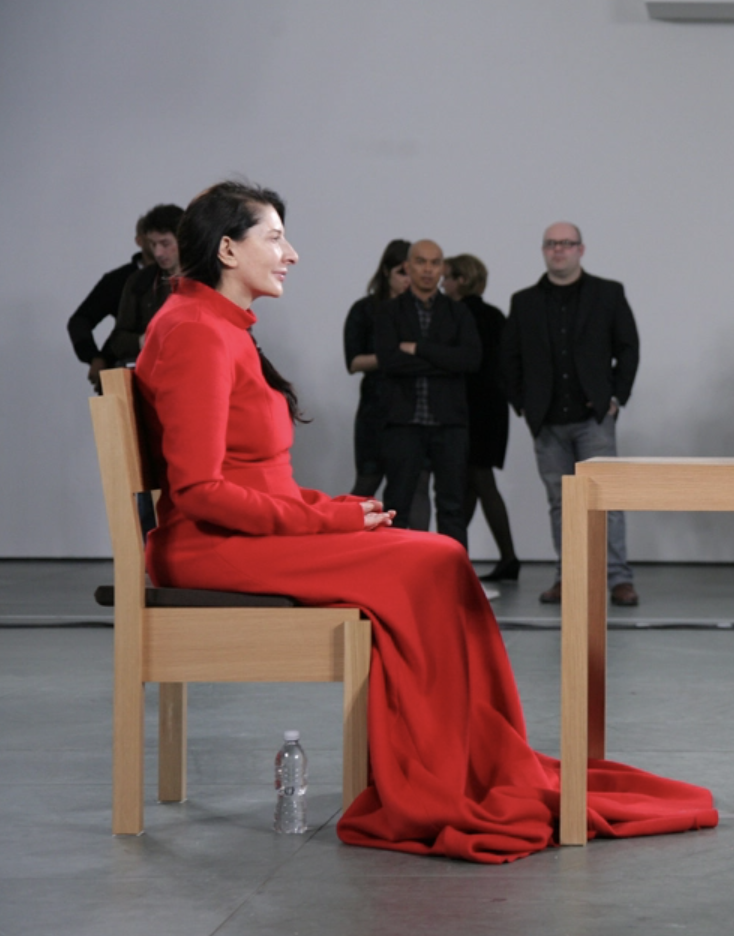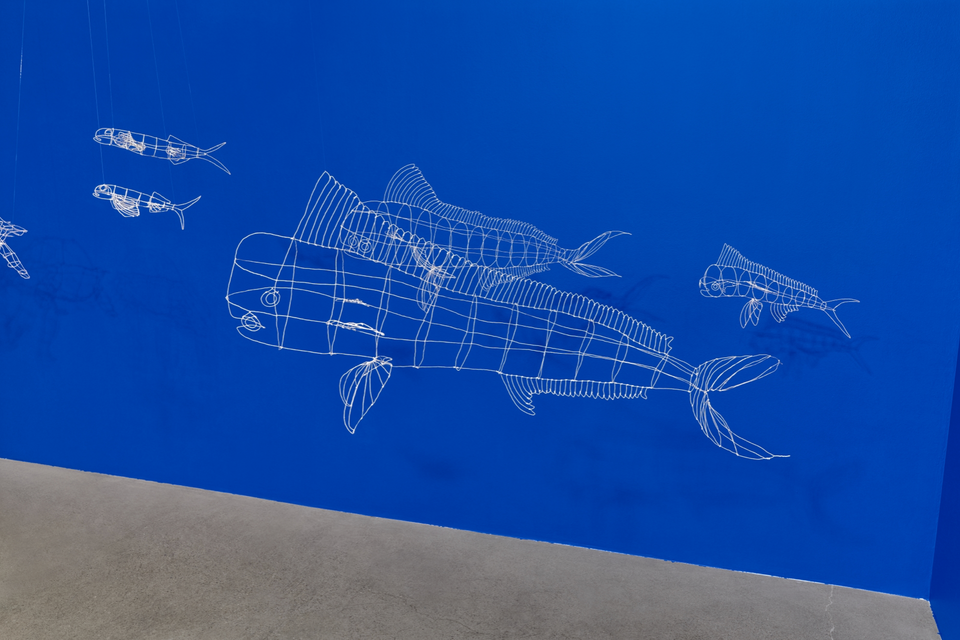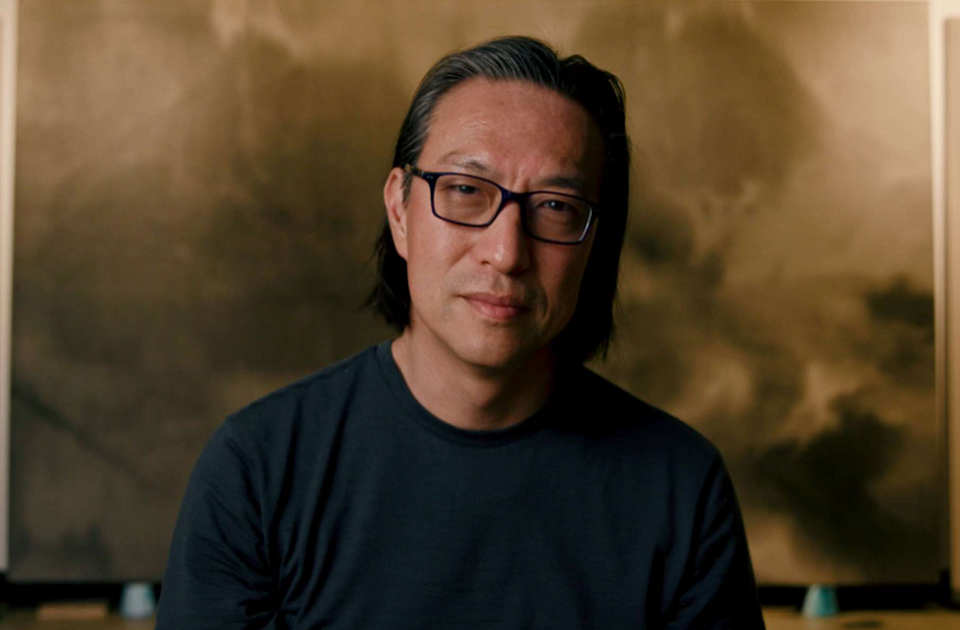Wayne Adams is Speaking in Tongues: a curated show of objects and images organized by the unrelenting voice of interpretation, is a two-person collaboration by Brent Everett Dickinson and Wayne Adams. The exhibition considers both visible and non-visible elements: Adams’s visual artifacts and Dickinson’s invisible but omnipresent voice-based sound piece (which works to organize the viewer’s experience of the visible elements, alternately supporting and unsettling the gallery experience through both responsible and irresponsible interpretive framing). It is the vacillation between supporting and unsettling, coupled with the complex meanings embedded in the work itself, which creates beautiful feedback and failure posing as many questions as answers. Of course the final, necessary component of this division of labor is the viewer’s own engagement with these complicated transactions, adding meaning to the exhibition by the very presence of their body and mind, displacing and organizing the works as they move through the space.
The title relates to I Corinthians 14 in which the Apostle Paul mandates the necessary context for Godly “tongues”—the inclusion of an inspired interpreter. The use of this concept provocatively draws a correlation between the coding that goes on in all art work, richly exemplified by Mr. Adams works, and the spiritually-inspired coding represented in the biblical account of speaking in tongues. Though there are obvious categorical differences between these, in both cases crude materials (i.e. paint in the one case and in the other sound pushed through the larynx of a prophet) are coaxed into sublime communication through the role of interpretation.
A note from Bruce Herman:
Adams and Dickinson are seasoned subversives. In one sense they are adopting a pose as artist and curator in the current exhibit. (In reality they are both equally exhibiting artists who set out to challenge the expectations and conventions of how we arrive at aesthetic meaning.) And this subversive posture is evident at several levels: first, they challenge the viewer to move out of the hyper-respectful, passive role of serious gallery-goer; second, they offer a voice-over commentary as an aural soundscape that both helps and potentially frustrates the viewer’s expectations, causing us to question our place in the economy of this art; third, they subvert the particular setting of an evangelical Christian college by referencing a charism of the Holy Spirit (speaking in tongues, or glossolalia), conflating it with the process of making art and seeking an interpretation of the sometimes obscure intentions of the artist (just as the unknown “tongue” would have been gibberish without the spiritual interpretation being made available).
In one sense interpretation is what this exhibition is about, even more than it is about a particular artist and his work. What do we expect from the artist? Is the artist the sole arbiter of the meaning in his or her own work? Do artists need a collaborative meaning-maker to assist them in delivering the “goods”, namely artistic significance? Wayne Adams has produced a diverse and dynamic range of different “fine art” objects over the years––much of which operates within a paradigm of artistic meaning shared in the fairly small enclave of contemporary artists and art theorists. Along the way Adams has also produced humorous yet critical art works that challenge us to re-think our expectations of both art and religion and their fraught relationship in our time. It seems to me that Adams and Dickinson are reaching out––beyond the bounds of the art cognoscenti––trying to see if there are other audiences for this kind of artistic questioning.
At a superficial level aspects of Adams’s work might appear disrespectful of evangelical piety––but as you spend time with him and his work it becomes clear that all of his art comes from a place of sincerity and longing––along with jesting––and that his friend and collaborator Brent Everett Dickinson has truly managed to capture the ambiguity and complexity that Adams attempts to evoke in his art. Both artists are earnest in their desire to pose important questions of art and artists in the 21st century, and simply making a pretty object is not, in their world, enough.
What is needed is that artists and art theorists take time to work together to build bridges of trust across the often-troubled waters of our current art culture. We are very pleased therefore to present “Wayne Adams is Speaking in Tongues” to both the Gordon and local art community in hopes that these very bridges are formed as a result.
Wayne Adams is a Brooklyn-based artist who received his B.F.A. from Calvin College and M.F.A. from Washington University in St. Louis. Adams has exhibited throughout the Midwest, New York and Vienna, Austria. Recent shows include, “Works Off Canvas” Denny Gallery, NY (2013), “The Ballot Show” Denise Bibro, NY (2012) “Control Alt Delete” HKJB, Brooklyn, NY (2011), “Adams | Miracle” STOREFRONT Gallery, Brooklyn, NY(2010).
Brent Everett Dickinson has exhibited his multi-media work throughout the United States, Canada, and Europe. He earned a MFA in painting from Yale University after graduating with a BFA from the Maryland Institute College of Art. He has recently produced original experimental sound pieces for the Chelsea Music Festival and the Cornerstone Music Festival and sculptural/sound pieces for the Socrates Sculpture Park in NYC and the Essl Museum in Vienna, Austria. Currently Dickinson is developing experimental drawings with the use of fruit flies and mosquitos, creating mineralized fossils in various meaningful landscapes around the country. He is also producing a video that utilizes a low-tech interface with Google maps to record the “movements” of one of Hitler’s toilets (currently installed in an auto-service station bathroom in New Jersey) around the world. This toilet will eventually be returned to its rightful place in Central New Jersey.




